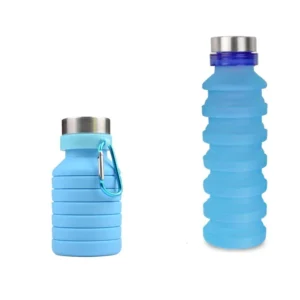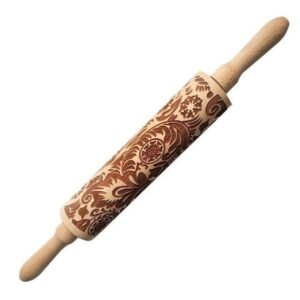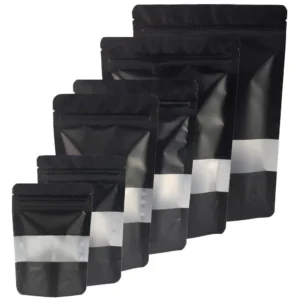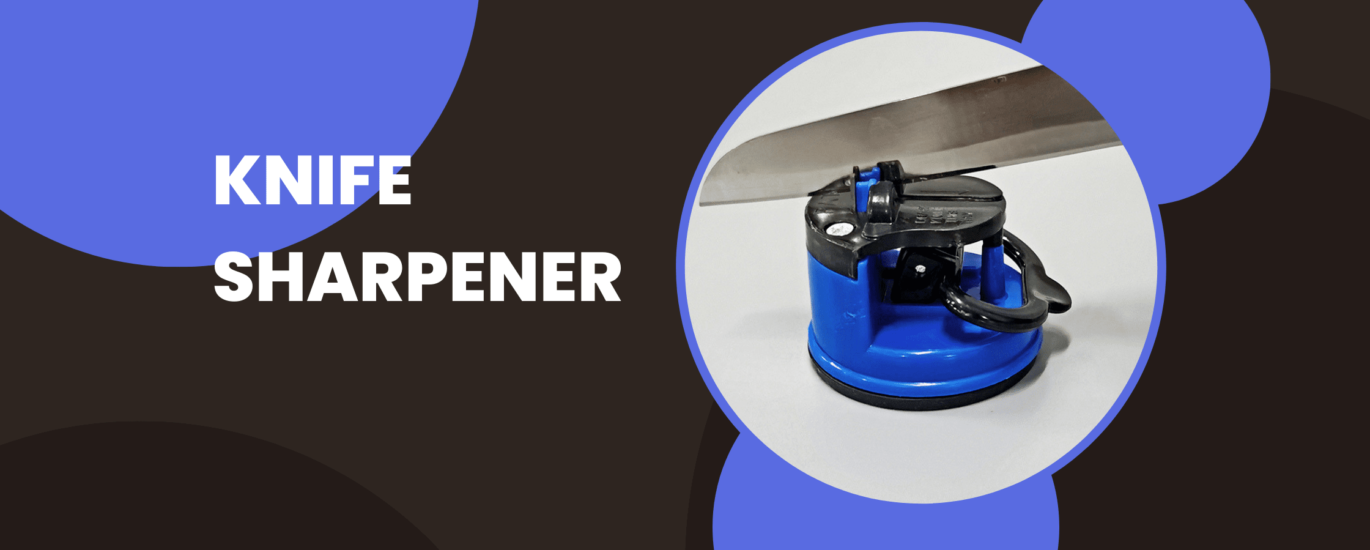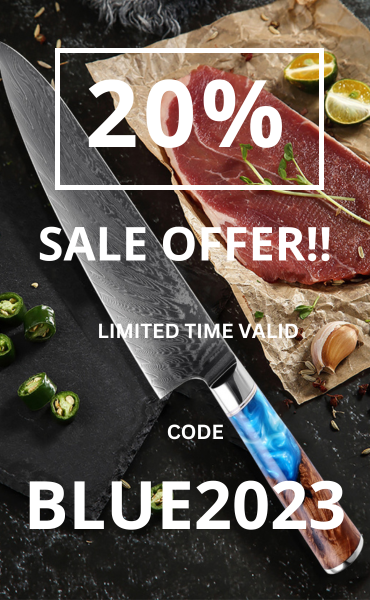Introduction
In every kitchen, a knife sharpener stands as an unsung hero, maintaining the efficiency and safety of your cutting tools. This essential tool breathes new life into your knives, redefining sharpness and precision in every slice or chop.
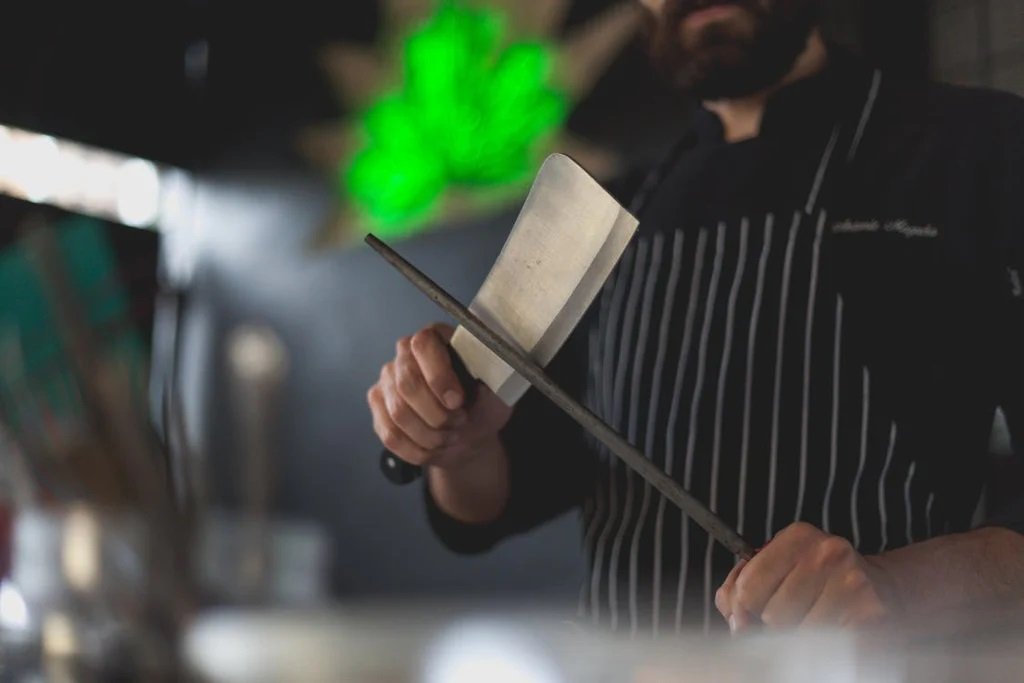
Importance of a Sharp Knife in the Kitchen
A sharp knife is paramount in any culinary setting for several reasons:
- Efficiency and Precision: A well-sharpened knife provides cleaner cuts, meaning less brute force is needed. This precision plays a crucial role in maintaining the texture and integrity of the ingredients, essential for recipes that demand finesse.
- Consistency and Control: Sharp knives allow for consistent cuts, which is vital for cooking at an even rate. They offer greater control over how the ingredients are dissected, enhancing the overall culinary experience.
- Speed: Time is of the essence in the kitchen. A sharp knife speeds up meal preparation, making slicing, dicing, or chopping more efficient, thereby saving valuable time.
Risks of Using a Dull Knife

Conversely, the risks associated with using a dull knife are often overlooked, posing significant threats:
- Increased Accident Risk: Dull knives require more pressure, making slippage or accidental cuts more likely. This increased force can lead to loss of control, potentially resulting in serious injuries.
- Inconsistent Cuts: Uneven chopping not only affects the aesthetic of the dish but also causes ingredients to cook unevenly. This inconsistency can alter the taste and presentation of the food.
- Strain and Discomfort: Using a dull knife can cause unnecessary strain on your wrist and hand, leading to discomfort or even long-term ailments.
Incorporating a knife sharpener into regular kitchen maintenance can mitigate these risks, ensuring a safer, more efficient, and enjoyable cooking experience. Whether manual or electric, a knife sharpener is a worthwhile investment for every culinary enthusiast.
| Key Considerations | Description |
|---|---|
| Efficiency | Sharp knives reduce preparation time and improve the cooking process. |
| Safety | Sharper knives require less force, decreasing the likelihood of accidents. |
| Food Quality | Precise cuts improve the visual appeal and even cooking of dishes. |
| User Comfort | Properly sharpened knives prevent hand strain and improve kitchen experience. |
By understanding these aspects, one can truly appreciate the critical role of a knife sharpener in daily kitchen activities. Regularly sharpening your knives enhances your culinary skills, ensuring each meal preparation is a task to look forward to.
Why Sharpen Your Knives?
Understanding the necessity of using a knife sharpener goes beyond the basic notion of maintaining a blade’s edge. It’s about enhancing performance, ensuring safety, and prolonging the lifespan of your valued kitchen tools.

Enhancing Knife Performance
Utilizing a knife sharpener regularly is crucial for optimal knife performance. Sharp knives offer:
- Precision: They make exact cuts, crucial for intricate recipes.
- Efficiency: Less effort is required, making the cutting process smoother.
- Quality: They help in preserving the texture and integrity of the ingredients.
A sharp knife, maintained with a quality knife sharpener, transforms meal preparation into a seamless, enjoyable process, ensuring each cut is a culinary statement.
Safety Concerns with Dull Knives
The safety benefits of using a knife sharpener cannot be overstated. Dull knives are unpredictable and hazardous because they require excessive force, increasing the risk of slippage and injury. By keeping knives sharp, you:
- Reduce the chance of accidents
- Enhance kitchen safety
- Ensure stable and controlled handling
Implementing a knife sharpener in routine kitchen practices is a proactive approach to preventing unnecessary risks, safeguarding everyone involved in the culinary process.
Extending the Lifespan of Your Knives
Regular maintenance with a knife sharpener significantly extends your knives’ lifespan. Sharp knives undergo less wear and tear because they require less pressure and fewer strokes. This practice:
- Preserves the knife’s structure
- Prevents premature dulling
- Saves money in the long term
By investing in a good knife sharpener, you protect your investment in quality blades, ensuring they remain dependable kitchen companions for years to come.
| Benefit | Impact of Regular Sharpening |
|---|---|
| Performance | Ensures precise and effortless cuts, improving overall culinary results. |
| Safety | Reduces the risk of accidents caused by unnecessary force or blade slippage. |
| Longevity | Preserves the structural integrity of knives, delaying the need for replacements. |
In conclusion, the importance of a knife sharpener in the culinary world is multifaceted. It is not just a tool but a guarantee of efficiency, safety, and longevity in your culinary endeavors. Regular sharpening is akin to valuing one’s craft, respecting the instruments of the trade, and, most importantly, safeguarding one’s passion for cooking.
Types of Knife Sharpeners
In the realm of culinary tools, a knife sharpener is indispensable. However, selecting the right type can be as nuanced as choosing the knife itself. Understanding the different sharpeners available is key to making an informed decision.
Manual vs. Electric Sharpeners
The debate between manual knife sharpeners and electric knife sharpeners is rooted in control versus convenience.
Manual Sharpeners:
- Offer more control over the sharpening process.
- Require physical effort, making the skill part of the culinary art.
Electric Sharpeners:
- Provide a quick and uniform sharpening experience.
- Ideal for those needing frequent, efficient sharpening.
While manual sharpeners appeal to the traditionalist, electric sharpeners are perfect for the modern, fast-paced kitchen.
Pull-through vs. Steel or Stone
Knife sharpeners also vary in design, particularly between pull-through models and sharpening steels or stones.
Pull-through Sharpeners:
- Convenient and easy to use, especially for beginners.
- Less risk of damaging the knife due to preset angles.
Sharpening Steels or Stones:
- Require technique and practice, preferred by professionals.
- Offer more flexibility in achieving desired sharpness.
Choosing between these depends on your skill level and the precision required in your culinary creations.
Pros and Cons of Each Type
Each knife sharpener type presents its own advantages and challenges:
Manual Sharpeners:
Pros: Greater control, portable, no electricity required.
Cons: More effort, may take longer, requires skill.
Electric Sharpeners:
Pros: Fast, less effort, consistent results.
Cons: Requires power, less control, potentially higher cost.
Pull-through Sharpeners:
Pros: User-friendly, safe, convenient.
Cons: Limited flexibility, may not suit all knives.
Sharpening Steels or Stones:
Pros: Professional-grade sharpening, high flexibility.
Cons: Steeper learning curve, more time-consuming.
Understanding these aspects ensures you select a knife sharpener that aligns with your needs, preferences, and culinary aspirations.
In essence, the ideal knife sharpener varies for each chef and kitchen. Balancing the ease of use with the level of control you desire is crucial in this choice, ensuring your knives are always ready to perform at their best.
Factors to Consider When Choosing a Sharpener
Selecting the appropriate knife sharpener involves more than meets the eye. Several critical factors influence this decision, ensuring that the sharpener you choose meets your knives’ specific needs and your usage preferences.
Blade Type Compatibility
Not all sharpeners are suitable for every knife. It’s crucial to consider:
- The material of your knives (steel, ceramic, etc.).
- The type of blade edge (straight, serrated, etc.).
- Compatibility with the sharpener.
Choosing a knife sharpener that aligns with your blade type ensures effective sharpening without damaging your knives, maintaining their longevity and performance.
Ease of Use
The complexity of using a knife sharpener can vary significantly. Consider:
- Your skill level with sharpening tools.
- The convenience you prefer in the sharpening process.
- The sharpener’s design in terms of comfort and understandability.
An easy-to-use knife sharpener makes the maintenance of your cutting tools a more enjoyable, less cumbersome task, encouraging regular blade care.
Versatility in Sharpening Different Blade Lengths and Widths
A versatile knife sharpener is invaluable in a diverse kitchen. Key considerations include:
- The range of knife sizes and styles you use.
- The sharpener’s adaptability to different blade dimensions.
- The variety of sharpening angles and options provided.
Investing in a knife sharpener capable of handling various knives enhances the functionality of your kitchen, ensuring every cutting tool, from the paring knife to the chef’s knife, is in peak condition.
| Consideration | Importance |
|---|---|
| Blade Compatibility | Ensures the sharpener is suitable, preventing damage and inefficiency. |
| Ease of Use | Promotes regular sharpening practices due to convenience and comfort. |
| Versatility | Accommodates all knives in your collection, providing comprehensive care. |
In conclusion, the right knife sharpener is one that fits the specifics of your blade collection, is comfortable and straightforward to use, and possesses the versatility to accommodate various sharpening needs. This careful choice guarantees that the heart of your kitchen, your knives, remains beating strong and sharp, ready for any culinary challenge.
How to Use a Knife Sharpener
Mastering the use of a knife sharpener is a quintessential skill in maintaining culinary tools. It’s not just about having the right sharpener but also knowing how to use it effectively.
Proper Positioning of the Knife
Correct blade placement is crucial in using any knife sharpener:
- Ensure the blade is aligned with the sharpening groove.
- Hold the knife at the appropriate angle as per the sharpener’s guideline.
- Apply consistent moderate pressure to keep the knife stable.
This initial step sets the stage for effective sharpening, preventing uneven wear or potential damage to the blade.
Number of Pulls Required
The efficiency of a knife sharpener also hinges on the repetition of strokes:
- Start with a set of 3-4 pulls to establish a basis for sharpness.
- Evaluate the blade’s edge and repeat if necessary.
- Avoid over-sharpening, as it can wear down the knife prematurely.
Understanding the balance between achieving optimal sharpness and preserving the blade’s integrity is key.
Checking for Burrs
Post-sharpening, it’s essential to check for burrs as they indicate a successful sharpening session:
- Run your fingers carefully along the non-sharp side of the edge to feel for a slight ridge (burr).
- If detectable, your knife has reached optimal sharpness.
- Remove the burr by gently stroking the blade on the sharpener or using a honing rod.
This final inspection ensures your knife is not just sharper, but also smooth and ready for precise, clean cuts.
| Step | Key Points |
|---|---|
| Positioning | Align with groove, correct angle, stable pressure |
| Number of Pulls | Start with 3-4, assess sharpness, avoid excess |
| Checking for Burrs | Careful tactile inspection, indication of sharpness, burr removal |
Using a knife sharpener effectively is about precision and mindfulness. Each step, from positioning to burr checking, is a testament to the meticulous art that cooking is. With these practices, your knives will always be in prime condition, making your culinary journey a cut above the rest.
Conclusion
In the culinary world, a knife is more than a tool; it’s an extension of the chef’s hand. The importance of its sharpness cannot be overstated, impacting not only the quality of the food but also the safety and efficiency of the chef. Regular use of a knife sharpener maintains this critical edge, transforming a mundane task into an art form.
Investing in a quality knife sharpener should be a priority for anyone serious about their culinary pursuits. It’s not merely about keeping the blades sharp; it’s about respecting the craft, ensuring precision, and honoring each ingredient’s integrity. A good sharpener is a small addition to the kitchen but makes a profound impact on your cooking experience.
FAQs
How often should you sharpen your knives?
The frequency of sharpening depends on usage intensity, but a general rule is to sharpen your knives every 60-90 days. Regular honing should be done every couple of uses to maintain the blade’s edge between full sharpening sessions.
How do you sharpen knives with a stone?
Sharpening with a stone involves a process called “grinding,” where you slide the knife across a rough stone surface at an angle of 15-20 degrees, sweeping from the blade’s base to the tip. This action is repeated several times on each side to achieve a sharp edge.
Can you sharpen ceramic knives?
Yes, ceramic knives can be sharpened, but they require a diamond or silicon carbide stone as they are harder than steel. The process is similar to sharpening steel knives but must be done with extra care to prevent chipping, often best left to professionals.
What is the best tool to sharpen a knife?
The best tool to sharpen a knife is a quality whetstone, providing precise control and a razor-sharp edge for your knives.
What is a person who sharpens knives called?
A person who sharpens knives is commonly known as a professional knife sharpener or simply a “sharpener.”
What is the best sharpener?
The best sharpener depends on personal preference, but many prefer whetstones for their precision and ability to maintain the knife’s edge.
Does a steel sharpen a knife?
Yes, a steel, when used correctly, can align the knife’s edge but does not sharpen it by removing material like a whetstone does.
Is it good to sharpen a knife?
Sharpening a knife is essential for maintaining its effectiveness. Regular sharpening ensures safety, efficiency, and longevity of the blade.
How do I sharpen a knife?
To sharpen a knife, place it on a whetstone at the correct angle and slide it across the stone, repeating until the edge is sharp.
How do I know if my knife is 15 or 20 degree?
To determine the angle, you can use a sharpening guide or visually estimate based on the knife’s design and purpose.
What is the easiest knife to sharpen?
Softer steel knives are easier to sharpen. Carbon steel and some stainless steels are commonly considered easier due to their malleability.
Do knife sharpeners ruin knives?
Good quality knife sharpeners do not ruin knives. Improper use, however, can damage blades. It’s essential to follow instructions and use proper techniques.


